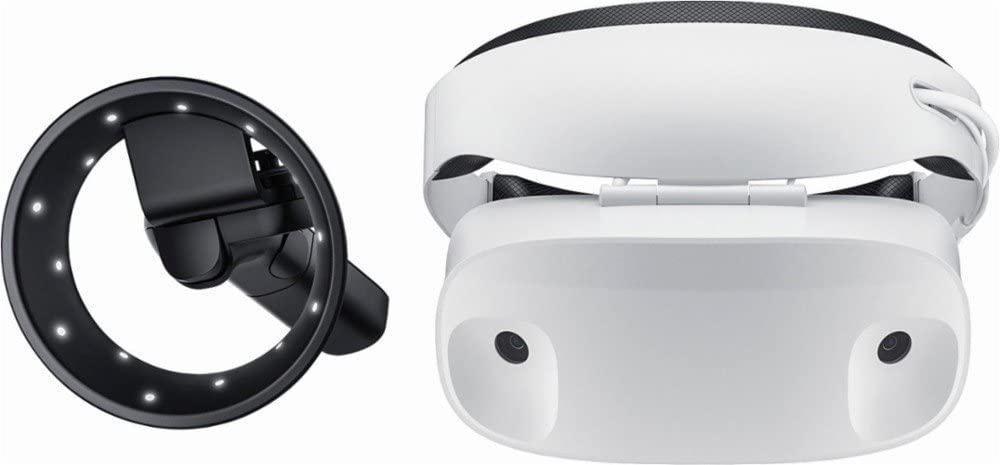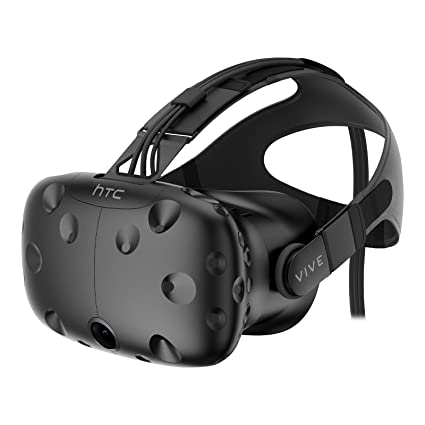HTC VIVE vs Dell Visor
When you compare the Dell Visor to the HTC VIVE you can see which VR Headset is better. Let's take a look of the comparison, and see which model of VR Headset out ontop.
What VR Headset is better?
When it comes to virtual reality headsets, the Dell Visor and HTC VIVE are two of the most popular options on the market today. Both have excellent features and offer an immersive experience for users. However, there are some differences between these two models that may make one a better choice than the other depending on your particular needs. Let’s take a look at how they compare in order to help you decide which is best for you.
Starting with field of view, both headsets offer an impressive 110° field of view that allows users to feel like they’re really in the middle of their experience. This is great for those who want a wide range of vision without any distortion or blurring due to technology limitations.
The resolution also plays a major role in determining how immersive your virtual reality experience can be. The Dell Visor offers 1440 x 1440 pixels per eye while the HTC VIVE offers 1080 x 1200 pixels per eye. The extra pixels in the Dell Visor give it an edge over the HTC VIVE in terms of clarity and detail, allowing for more vibrant colors and finer details within games and videos alike.
The minimum CPU required by each headset is also important when considering which headset is best suited for you as well as what type of gaming experience will be available on them. The Dell Visor requires an Intel Core i5 processor while the HTC VIVE requires either an Intel I5-4590 or AMD FX 8350 processor; both fairly high-end processors that can handle intensive gaming experiences with ease but not quite powerful enough for true 4K VR performance (which would require either an Nvidia GTX 1080 Ti or AMD Radeon Pro Duo).
When it comes to graphics, both headsets require similar GPUs with similar power levels: The Dell Visor requiring Nvidia GTX 965M/AMD RX 460 while the HTC VIVE requiring Nvidia GeForce™ GTX 1060 or AMD Radeon™ RX 480 - offering smooth visuals but still limited from achieving full 4K resolution performance on either headset due to their GPU constraints; however this should still provide plenty of visual fidelity for most VR gamers out there regardless!
In terms of operating system compatibility, both headsets work with Microsoft Windows (10 & up) allowing gamers access to all sorts of compatible content available through SteamVR and Viveport platforms respectively as well as being able to use non-VR software such as Google Chrome without issue - another plus point that cannot be ignored! Lastly, we come down to refresh rate where once again we see similarities; with both devices sporting 90 Hz refresh rate which is standard amongst most modern PC based VR HMDs (Head Mounted Displays) though not quite reaching peak capabilities seen within standalone HMDs such as Oculus Rift S's 80 Hz refresh rate; but certainly adequate enough given its PC based hardware constraints - something worth noting nonetheless!
Overall, both headsets offer excellent features and have strengths & weaknesses that could make one more suitable than another depending upon your particular needs & wants from your desired VR set up . Personally I prefer using my Dell Visor due mainly to its higher resolution display providing me crisp visuals during my gaming sessions - though if budget was no concern then I'd opt for something like an Oculus Rift S instead purely because it does have superior specs than either mentioned above thus allowing me higher quality immersion into whatever world I choose explore!
Specs comparison between the two VR Headsets
| Dell Visor | HTC VIVE | |
|---|---|---|
| Overview | ||
| Brand | Dell | HTC |
| Model Name | Visor | VIVE |
| Release Date | 2017 | 2016 |
| Country of Origin | United States | Taiwan |
| Category | PC VR | PC VR |
| Battery Life | 2.5 h | |
| Display | ||
| Field of View | 110° | 110° |
| Resolution | 1440 × 1440 px (per eye) | 1080 × 1200 px (per eye) |
| Refresh Rate | 90 Hz | 90 Hz |
| Display Type | LCD | OLED |
| Minimum Requirements | ||
| Min. CPU Required | Intel Core i5 | Intel I5-4590 or AMD FX 8350 |
| Min. Graphics Required | Nvidia GTX 965M/AMD RX 460 | Nvidia GeForce™ GTX 1060 or AMD Radeon™ RX 480 |
| Min. RAM Required | 8 GB | 4 GB |
| Operating Systems | Microsoft Windows | Microsoft Windows |
| Sizing | ||
| Weight | 590 g | 470 g |
| Dimensions | 210 × 170 × 270 mm | 199 × 122 × 122 mm |
| Features | ||
| Room Scale? | YES | YES |
| 360 Tracking? | YES | YES |
| Positional Tracking? | YES | YES |
| Front Camera? | YES | |
| Usable with Glasses? | YES | YES |
| Cooling System | No | |
| Built in Headphones? | No | |
| Built in Microphone? | YES | |
| Flip Visor? | YES | YES |
| Voice Command? | YES | |
| IPD Adjustment? | YES | |
| Lens to Eye Adjustment? | YES | |
| USB? | YES | YES |
| MicroUSB? | No | |
| Display Port? | YES | |
| Mini Display Port? | No | |
| HDMI? | YES | YES |
| MicroSD? | YES | |
| Bluetooth? | YES | YES |
| Wifi? | YES | |

